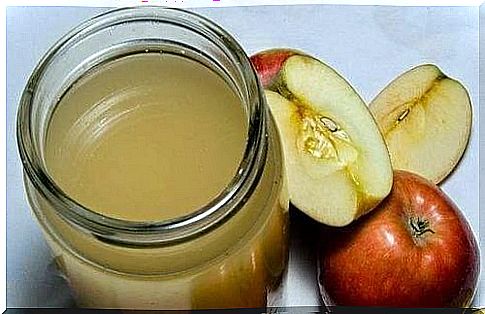Learn How To Prepare Your Own Apple Cider Vinegar
To obtain apple cider vinegar, it is essential that the apples are sweet, which is why the most ripe ones should be used. If they are acidic, we can add a little sugar.

Apple vinegar is a very popular product all over the world, known for its multiple uses in the home, in the medical community as well as in beauty programs.
In the market, one can find several brands of apple cider vinegar at different prices, although most of them are often very cheap.
However, some brands do not offer us a quality product and, in this case, it is not possible to enjoy all the benefits that apple cider vinegar offers us when it is pure.
Why make apple cider vinegar yourself?
The preparation of apple cider vinegar is simpler than one might imagine, in addition to being very economical.
It is important to know that not all brands are reliable, because some apple vinegars that can be found on the market contain sulphites, a substance which acts as a preservative and which helps to make it homogeneous.
In addition, this substance removes properties from it and alters its taste.
How to make homemade apple cider vinegar?
First step: Extract the juice
- It is best to choose apples that are sweeter and free from bumps, mold or rot.
When possible, buy organically sourced apples that have not been subjected to pesticides or other chemicals that can interfere with fermentation. - Wash them well, peel them and remove the core. Then extract the juice from the apple so as to obtain about a liter.
Second step: Obtain must
- Pour the juice you obtained in the previous step into a glass or earthenware glass, as wide as possible, and fill it up to halfway, in order to facilitate fermentation.
Cover with a flask to prevent oxygen from entering and so that the fermentation gases can spread well. - The temperature must be maintained between 18 ° C and 20 ° C throughout the fermentation, ie for 4 and 6 weeks.
- The sweetness of apples is essential for making vinegar. This is why we recommend that you use very ripe apples. However, if they are acidic, you can add a little sugar to them.
- If you want the fermentation to be faster, leave a little apple skin before extracting the juice.
- The next step is to pour the must into another container, for transformation into vinegar.
Third step: Turn the must into vinegar
- Pour the wort into a large container and put it in a warm place in your home, for example, near the heater or in direct sunlight.
Cover it with a clean cloth and let it sit for 3 days. - Once the three days have passed, uncover the container and put it in a place where the average temperature is 20 ° C. Sudden changes in temperature could alter it.
- Stir the contents once a day, so that you can retain the small layer of ferment that appears on the surface.
- Finally, you need to strain the vinegar and keep it in a preferably dark bottle, as direct light can alter it.
You will then obtain an organic apple cider vinegar, without chemicals and with all the medicinal properties.
Another recipe for making apple cider vinegar at home
This alternative for making apple cider vinegar at home is much simpler and less time consuming than the previous proposal.
Ingredients
- 5 liters of mineral water
- 1 kilo and a half of very ripe apples
- 1 kilo of brown sugar
Method of preparation
- Wash and disinfect the apples well with a little baking soda diluted in water. Once they are clean, cut them into pieces and mix them with sugar, until they are well mashed.
- Then, in a glass container, put the five liters of water and add apple puree and sugar. Cover the container so that air can enter but insects cannot get into it.
- For the first few days, the mixture should be stirred daily with a wooden spoon.
- The following days, it will be necessary to mix every other day.
- Finally, let sit for ten more days.
In a period of 30 days, you will have very good quality apple cider vinegar, after you have filtered and bottled the mixture.
Avoid keeping the vinegar in a container filled to the top, as it may continue to ferment and cause the container to explode.
If possible, open it once a day to prevent this effect from occurring.









